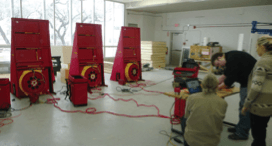Concurrent Forum Descriptions: Applied Research & Innovation Day
Concurrent Forum Descriptions
We are excited to welcome you to the afternoon concurrent forums taking place on April 6, 2017, as part of Red River College’s first-annual Applied Research & Innovation Day. Read on.
Read More →


 After a long wait, the
After a long wait, the  Tech-Access Canada
Tech-Access Canada





